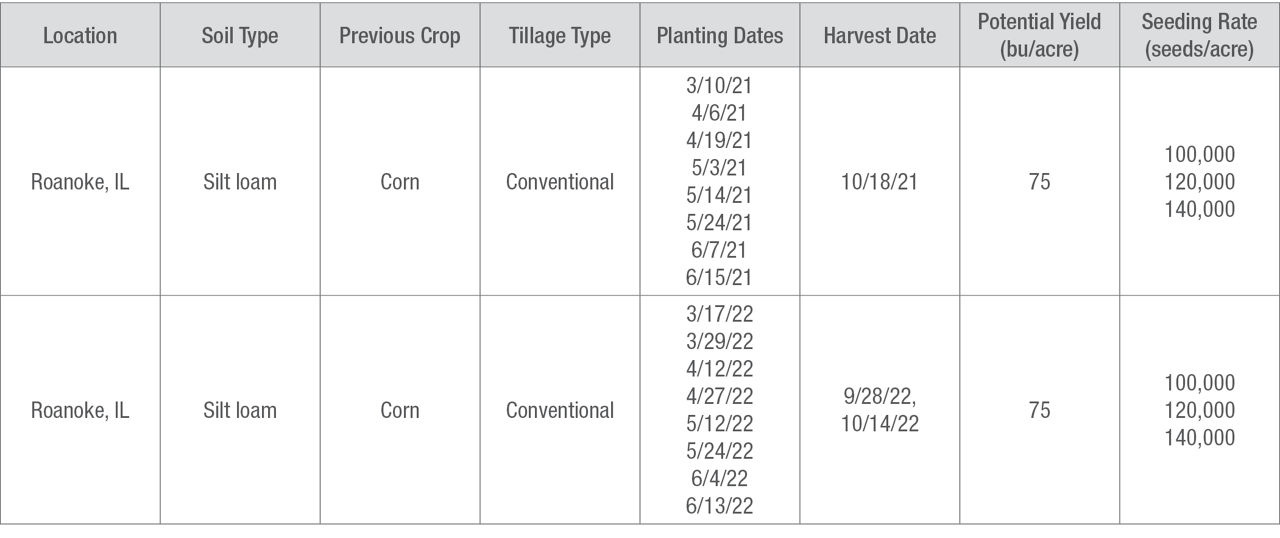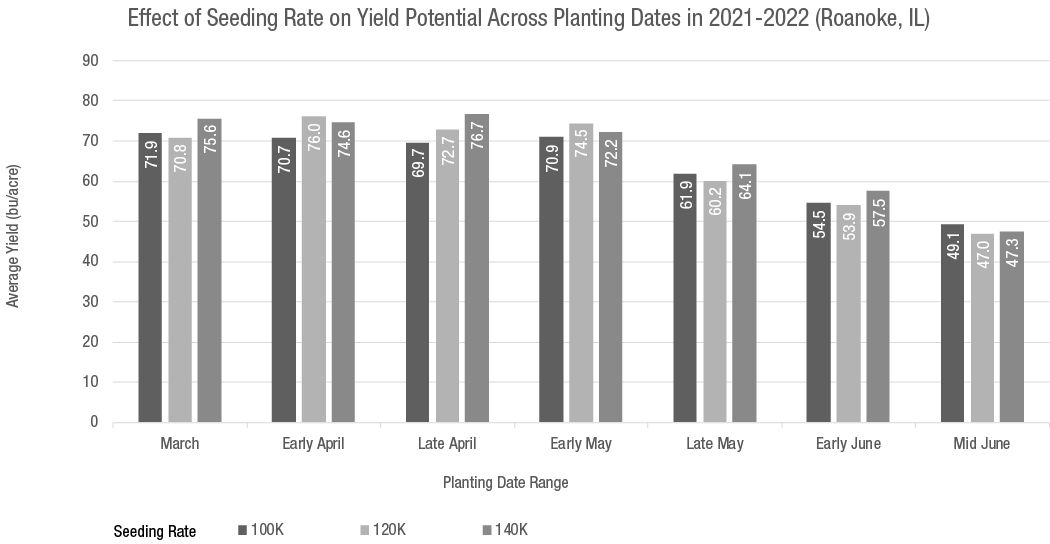The Effect of Seeding Rate and Planting Date on Soybean Yield Potential
March 19, 2023
TRIAL OBJECTIVE
- Largely due to the widespread adoption of treated soybean seed, growers increasingly plant soybean seed earlier than in years past. For example, 41% of the Illinois soybean crop was planted by May 2, 2021, compared to the previous 5-year average of 14%.1
- Historically, researchers and agronomists have recommended increasing seeding rates to attain satisfactory yield potential when planting later in the growing season.2 This research was conducted with a goal of understanding the interaction between planting date and seeding rate.
- Another objective was to understand if seeding rate and planting date affect ultimate plant height since taller plants tend to lodge more.
RESEARCH SITE DETAILS
- This research was conducted at Bayer Crop Science FOCUS sites in Woodford County, Illinois from 2021-2022.
- A 3.5 MG soybean product was planted.
- All seed was treated with Acceleron® Seed Applied Solutions STANDARD and ILEVO® seed treatment.
- Standard fertility and weed management practices were followed, and plots were harvested when they reached maturity.

UNDERSTANDING THE RESULTS
- Although yield decreased with later plantings, there was no distinct yield trend associated with seeding rates at any planting date (Figure 1).
- In 2022, final plant height was measured by seeding rate across planting dates. No conclusions about the effect of seeding rate on height can be gained from this research; however, later planted plots tended to be shorter (Figure 2).


KEY LEARNINGS
- This research does not support the commonly accepted notion that farmers need to increase soybean seeding rates when planting later in the growing season.
- In this study, planting soybean earlier in the season had a greater impact on increasing yield potential than seeding rate decisions.
- Planting date also had a greater impact on plant height than seeding rates for this study.
Sources
1Illinois Crop Progress and Condition. May 3, 2021. USDA National Agricultural Statistic Service. https://www.nass.usda.gov/Statistics_by_State/Illinois/Publications/Crop_Progress_&_Condition/2021/20210503-IL-Crop-Progress.pdf.
2Kleinjan, J., Varenhorst, A., and Hauswedell, B. 2020. Soybean planting population: a review. South Dakota State University Extension. https://extension.sdstate.edu/soybean-planting-population-review/.
1310_193751